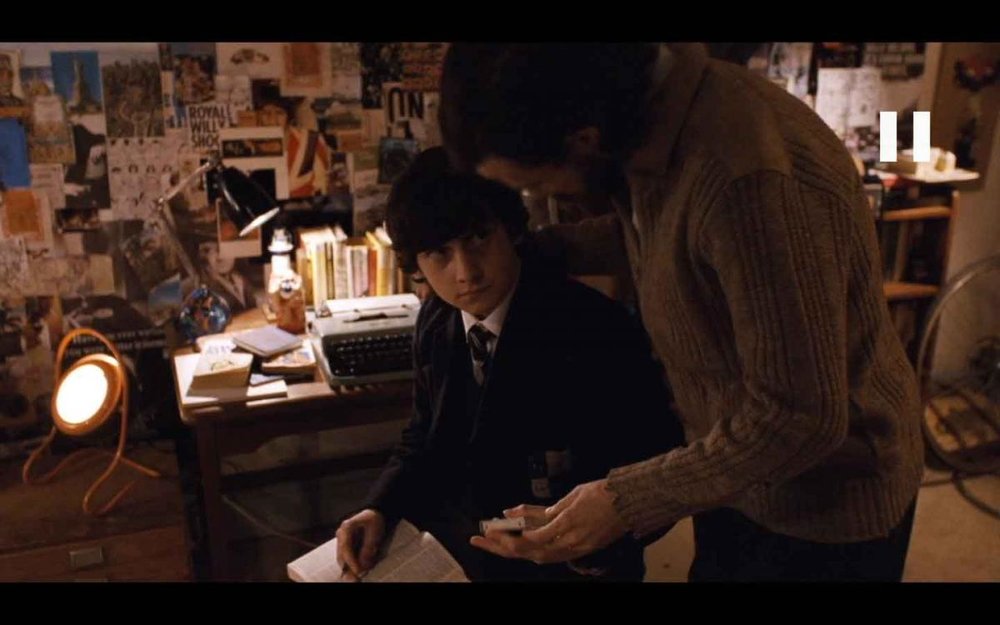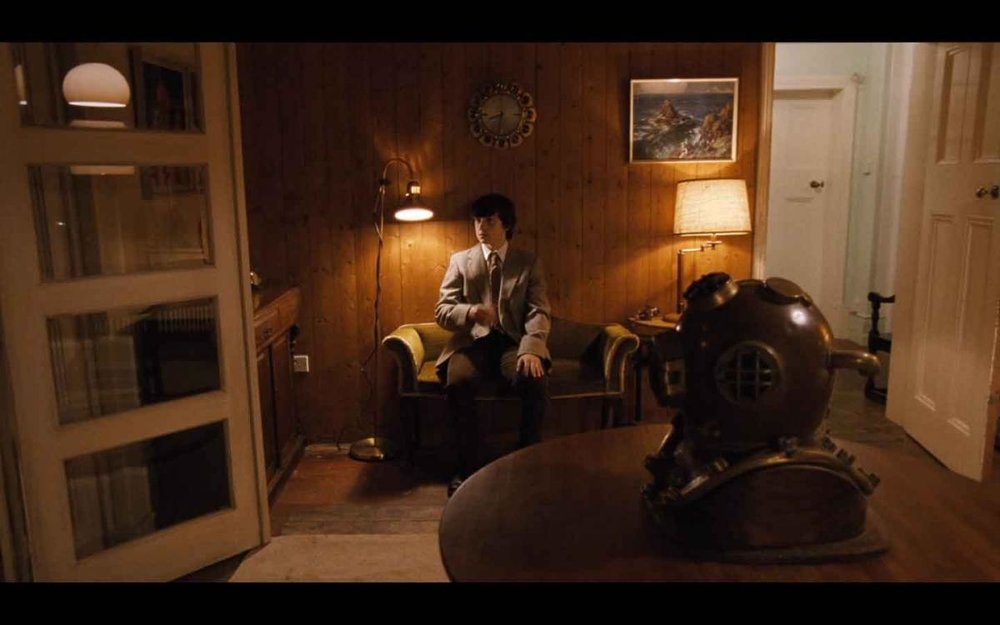
Connor Adam
-
Posts
21 -
Joined
-
Last visited
Posts posted by Connor Adam
-
-
Hey,
Anyone have any experience with the following 16mm lenses? I'm shooting a short on 16mm and these are the lenses available to me from the rental place. I have shot with the Ultras before and as lovely as they are, I think I'm looking for something with a little more character.
Angenieux 11.5-138mm T2.3
Cooke 10.8-60mm T3
Cooke 10-30mm T1.5
Canon 8-64mm T2.4
Zeiss Ultra 16s
Also, as a general rule, are there noticeable differences/traits in these lens manufactures across the board?
-
Hi,
I'm trying to get my head around some basic concepts of working with different colour spaces when grading (specifically, in Resolve) and am hoping some of you may be able to shed some light on it all.
I am using a Macbook Pro with DaVinci Resolve, outputting through a Blackmagic Mini Monitor into a HP Dreamcolor Z24X.
Am I right in thinking that the correct way to grade with this setup would be to work in the sRGB colour space in Resolve, and then set my monitor's colour space to the one relevant to my delivery? Eg if I want to grade for cinema projection I can set the monitor to DCI-P3, for DVD I could do Rec 709 and for web I can do sRGB. And presumably Resolve's sRGB colour space will be able to 'convert' the output to say DCI-P3 or Rec 709 so I can accurately see the video on a monitor set to those standards?
All the best,
Connor -
Josh, of course. Typo on my part!
Thanks John - a clear explanation. I just wasn't aware that exposure index describes where the exposure is set, opposed to the sensitivity (or ISO/ASA rating) of the stock/sensor.
-
Many thanks for your help. I think I understand the concept now, although still a little confused as to the statement they make saying 'EI 500 film, therefore, is the equivalent of ASA/ISO 1000'.
Perhaps Kodak are referring to a recommendation to overexpose film by a stop? -
Hey,
I was reading through Kodak's 'The Essential Reference Guide for Filmmakers' and came across the following:
A word about film speedsYou probably know that motion picture films use exposure index (EI) to indicate speed. Although similar, EI is not the same as the ASA or ISO speed used for still films. EI denotes a somewhat conservative figure related to the higher quality requirements of motion picture film that must be projected onto a large screen. Typically the EI speed is about one stop lower than ASA or ISO. EI 500 film, therefore, is the equivalent of ASA/ISO 1000.
Is anyone able to develop further on this? It is the first time I've come across the concept that EI is not the same as ISO. If I take what is written literally, does this mean that I should be setting my light meter to read at 500 instead of 250 (assuming I am shooting on say 250D stock) to get correct exposure?
All the best,
Connor -
Good choice and great glass! Just remember to overexpose it. Could you please share where you're doing the telecine? i-Dailies? Cinelab? Would be great if you could post some footage or jpegs later on.
Sure - Processing and telecine through CineLab, hopefully a GoldenEye scan too. Will make sure to post some footage after the shoot!
Have you had much experience with overexposing 16mm? I have shot 16mm a few times in the past but always stuck to the base ASA. Results have seemed fairly good but I have heard from quite a few that an overexposure of 2/3rds is a good thing to do.
-
Thanks as always guys. Have bought some Lee Soft Silver, will have a play with that soon.
Sebastien - Thanks for the reference. Are there any others you can think of off the top of your head? -
Thanks for your advice, 250D it is. Although I will look into the other stocks you've mentioned - again, thanks for those.
With regards to sharp lenses, we should be OK as we are using Zeiss Ultra 16s. Looking forward to seeing the results as it'll be the first time I've shot 16mm with lenses that aren't really old and super soft!
-
Thanks Mark.
Could you elaborate on the benefits to using the Photocrescentas bulbs over standard 2700K bulbs available in home DIY stores? -
Guy, thanks - a very useful trick that I'll be sure to put into practice.
David: I have read that standard household bulbs are unreliable with consistent temperature, and can often have a green tint to them? How true is this?
Your suggestion regarding the CTB on the grey card sounds sensible - I was hoping you could clarify the process for my situation a little? If I were shooting in a house with standard 2700K bulbs and mixing those with tungsten movie lights with CTO on, under what light do I shoot the grey card? With the household bulbs but 1/4 CTB'ed? Or should I turn off the household practicals and CTB a tungsten light?
I suppose any kind of 2700K bulb will work? I live in the UK, where it seems near impossible to find PH bulbs! -
Thanks for your replies.
Chris, when you say 250D would give me more flexibility, are you referring only in terms of exposure?
Do either of you have any experience in the difference in grain fineness and amount between these two stocks on 16mm?
-
Apologies. I accidentally posted this in the wrong section and couldn't work out how to delete it.
-
Hey,
I have read in several places that slower stocks yield a more contrasty look. Does anybody have any experience with this? Would Kodak 50D be noticeably more contrasty than, say, 250D?
I am shooting a scene during an overcast day and am thinking that using 50D over 250D would give the image more contrast, as I am worried that the light may look too flat on the actor's faces. Alternatively, might it be better to go with a less contrasty stock and reserve option to add contrast in the grade?
-
Hey,
I have read in several places that slower stocks yield a more contrasty look. Does anybody have any experience with this? Would Kodak 50D be noticeably more contrasty than, say, 250D?
I am shooting a scene during an overcast day and am thinking that using 50D over 250D would give the image more contrast, as I am worried that the light may look too flat on the actor's faces. Alternatively, might it be better to go with a less contrasty stock and reserve option to add contrast in the grade?
-
Thanks for your replies.
I will get a large butterfly frame (12x12 or so) with black solid and use that to create some negative fill. In terms of bounce, is there any specific material you'd recommend using to create the eyelight? -
Hey,
Looking for some help and advice with shooting practicals and getting the correct colour temperature!
I am shooting on location in a house with standard household bulbs, and I'd like the colour temperature to be warm but not excessively orange. I've attached some reference stills from Submarine, which has a nice aesthetic similar to what I'm aiming for.
The format is 16mm and I originally thought of shooting 250D with no filters, leaving the practical bulbs as they are. Am I right in thinking, however, that this might yield a result that is too orange and saturated? If I were to shoot with Tungsten stock, how would I achieve that extra warmth - something best done in the grade?
In terms of the actual bulbs, does anyone have any advice on what type to use? I am keen on getting some that are rated accurately at 3200K so they match with any other artificial lights I may use.
-
Hi,
I have a couple of questions that I'd greatly appreciate any help or advice with regarding shooting with natural light.
For an upcoming shoot, one of the scenes written is set on a beach and involves a simple conversation between two characters. The director would like it to be shot in overcast weather - he'd like it to look grey, miserable and "flat", but in an aesthetically pleasing (cinematic?) way. I'm concerned that shooting in overcast weather won't look good, and would love anyones input on how to go about this, or examples of films that have managed it well?
The area I am least knowledgable about is in using light modifiers such as flags/bounce boards/etc. Obviously the success of the shoot depends largely on the weather itself - something I can't control! Are there any particular shooting conditions that you would recommend for good results? (ie. is it better to shoot with clear skies and use diffusion/flags etc in a particular way, or shoot in overcast conditions?
Using artificial light sources is a possibility but ideally we'd like to stick with natural light only.
All the best,
Connor
-
Thanks for all of your ideas and input, it's much appreciated.
I'm going to try and shoot some tests on both 500T and 250D, will update with the results!
-
David, thanks for your reply.
Sounds like 250D is the more logical choice, and most of the other scenes will also be shot with this stock anyway.
The colour change in light is my main concern, but I suppose that is just an issue that I'll always have shooting at that hour. Would shooting on tungsten stock during the golden part of magic hour yield a similar look to the blue hour? Or will it just look like it was shot on the wrong stock? I appreciate this might be hard to answer!
-
Hi,
I'm a student cinematographer with a shoot coming up, on 16mm with the Arri SR3. I have a couple of shoots planned during the blue phase of magic hour (civil twilight and the blue hour), on a beach. I think I'm correct in saying that I need to shoot with daylight colour balance to match the blue tones in the sky as tungsten will make them even cooler?
I was wondering if anyone has any thoughts on the different aesthetics of 500T and 250D? (aside from the obvious sensitivity and colour balance differences). Is there any particular advantage (visual or otherwise) to shooting 500t with an 85 or 250d straight up?
All the best,
Connor





16mm Lenses
in Lenses & Lens Accessories
Posted
Kalle, thanks for the link and for sharing your experience with the 10.4-52 - that is also an option for me to use so I'll look into it a bit more! Do you have anything you've shot on it that you'd be happy to share? At the moment I'm leaning towards the 10-30 for the T1.5, as I'll be shooting 200T and don't want to risk struggling for exposure.
The description along with the 10.8-60 is just : Super 16 conversion of Cooke 9-50mm zoom lens
Kenny and Bill, again, thanks for your input. I'm not too sure the exact 'thing' I'm looking for, as I'm relatively new to the idea of being selective about lenses for a particular aesthetic. All I know is that the Ultra 16s are quite clean, and I'd like to explore a more characterful lens - whether this be Cooke, Angenieux, Canon, etc. I guess my basic intention is to just see if anyone has any thoughts on not just these specific lenses but lens manufactures in general, and what look they seem to give.